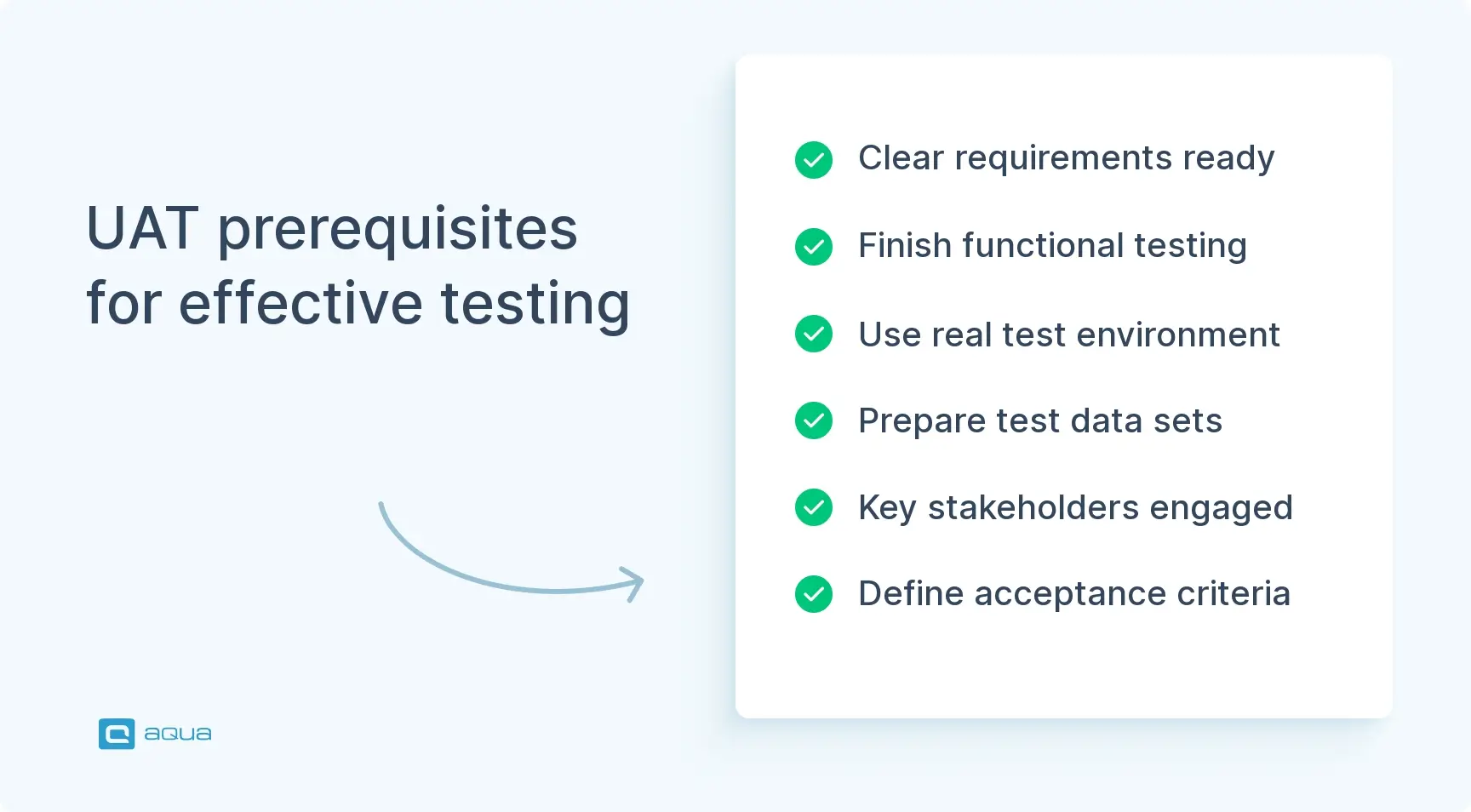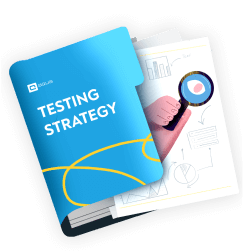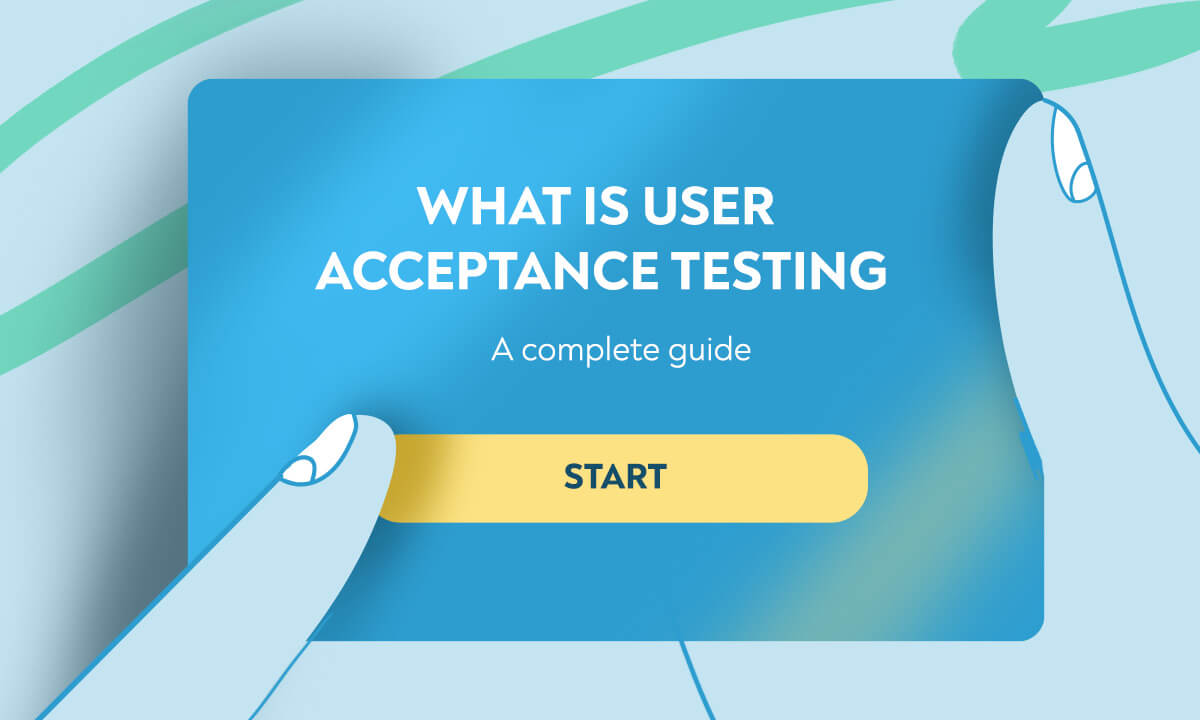What is user acceptance testing?
This involves performing a series of operations on an app after other critical app development procedures, such as system, functional, and integration testing. The evaluation is performed by the end-user or business client, and a UAT testing software. It’s done to verify that the product is in line with the intended use before moving it to the production environment.
What is the purpose of UAT?
The evaluation is geared toward validating the product’s viability in a real-world scenario, depending on the prevailing user needs, specifications, or even preferences. The focus here is usually on user feedback, whether positive or negative, which helps streamline the user experience by reducing the number of pain points when the product is finally deployed.
Best practices of UAT process management
Managing the UAT process effectively involves several key best practices:
- Early Involvement and Planning: Start involving end-users and stakeholders early. With users, you can do it via interviews or surveys, while with stakeholders, focus groups or workshops would help a lot. This helps in understanding their requirements and expectations, laying out clear objectives, and defining the scope of testing.
- Comprehensive Test Case Development: Create detailed and realistic test cases that cover all possible scenarios. These cases should be easy to understand and execute, even for non-technical users.
- Realistic Test Environment Setup: Set up a testing environment that closely resembles the production environment. This ensures that testing reflects real-world conditions and provides accurate results.
- Clear Acceptance Criteria: Define clear acceptance criteria for each test case and for the overall UAT phase. This helps in determining whether the system meets user expectations and when it’s ready for deployment.
- Effective Communication and Collaboration: Foster open communication and collaboration among all stakeholders involved in the UAT process. Regular updates, meetings, and feedback sessions ensure everyone is on the same page and any issues are addressed promptly.
- Thorough Issue Management: Implement a robust system for reporting, tracking, and resolving issues identified during testing. Prioritize issues based on their severity and impact on the system’s functionality.
- Regression Testing: Don’t forget about regression testing. Ensure that any changes made during the development process do not adversely affect existing functionalities.
- User Training and Support: Provide adequate training and support to end-users participating in UAT. This helps them understand who is responsible for User Acceptance Testing and ensures the smooth execution of the testing process.
- Feedback Collection and Analysis: Actively seek feedback from end-users and stakeholders throughout the UAT process. Analyse this feedback to identify trends, common issues, and areas for improvement.
- Documentation and Knowledge Sharing: Document the UAT results, findings, and best practices for future reference. Share this knowledge with relevant stakeholders to facilitate continuous improvement.
By following these best practices, you can effectively manage the UAT process, validate the software’s readiness for deployment, and ensure high user satisfaction with the final product.
UAT prerequisites
Before initiating UAT, it’s crucial to ensure that certain prerequisites are in place for a smooth and effective testing process. Here are some essential UAT prerequisites:
- Clear Requirements Documentation: Ensure that comprehensive and documented requirements are available. These requirements serve as the basis for UAT test cases and help stakeholders understand what functionality to expect from the software.
- Functional Testing Completion: Functional testing should be completed successfully before UAT begins. Functional testing verifies that each component of the system performs as expected according to the specified requirements.
- Test Environment Setup: Establish a dedicated test environment that resembles the production environment. This environment should include the hardware, software, configurations, and data to simulate real-world usage scenarios accurately.
- Test Data Preparation: Prepare relevant and realistic test data for UAT use. This data should represent various user roles, scenarios, and edge cases to validate the system’s functionality thoroughly.
- Stakeholder Availability: Ensure that key stakeholders, including end-users, business owners, project managers, and developers, are available and actively engaged throughout the UAT process. Their participation is essential for validating requirements, providing feedback, and making acceptance decisions.
- Acceptance Criteria Definition: Define clear acceptance criteria for each test case and overall UAT phase. These criteria will serve as the benchmark for determining whether the system meets user expectations and is ready for production deployment.

Ensuring these prerequisites before initiating UAT, you can maximise the effectiveness of the testing process, identify issues early, and ultimately deliver a high-quality product that meets user requirements.
Shift-Left UAT and Continuous User Involvement
Smart software teams have figured out something pretty clever – they’re bringing business users into the conversation way before traditional UAT even starts. Instead of waiting until the end to surprise everyone, you can loop in UAT representatives during requirements sessions, prototype walkthroughs, and sprint demos.
Here’s what happens: those early touchpoints catch misaligned expectations before they turn into major rework. Users help shape acceptance criteria while there’s still time to adjust course without breaking budgets.
A concrete first step is picking one upcoming feature and inviting your key business stakeholder to the next design review. Let them poke around the wireframes and ask questions. You’ll be amazed how many ‘wait, that’s not what I meant’ moments surface early rather than during formal testing.
By the time official UAT rolls around, users already understand the system’s logic and workflow. The result? Acceptance rates nearly double compared to traditional approaches, and feedback quality shoots up because people aren’t seeing everything for the first time. Your UAT phase transforms from a last-minute scramble into a final validation checkpoint.
Your UAT scenarios need to mirror actual user workflows, not just check boxes. Focus on the business processes your users hit daily, then throw in the edge cases that could break everything.
Map one complete user journey from login to final action, including where systems talk to each other. Companies using this approach catch nearly 40% more critical issues before launch.
Skip the temptation to test every feature individually; that's functional QA territory. Instead, test how Jane from accounting actually processes invoices or how your sales team closes deals. Include the messy scenarios too: what happens when someone uploads the wrong file type or hits "back" at the worst possible moment?
Start with your most revenue-critical process and build your first scenario around that single workflow.
The available UAT types
Now that you understand the definition of UAT, what are the prevalent types you should know? Well, the AT types may include:
1
Alpha and beta: giving the app to select end-users to evaluate its usability and give feedback for later improvement
2
Regulation (RAT): ensuring that the app complies with the required legal regulations
3
Contract (CAT): evaluating whether the app in question embodies the qualities, criteria, and specifications provided in the development contract
4
Business (BAT): evaluating whether the product meets certain business requirements in a real-world scenario, against a predetermined business case
5
Operational (OAT): analysing the predefined workflow of the product in question in terms of compatibility and reliability, as well as its operational readiness in terms of stability
Who performs the evaluation?
It can be performed by two groups of people, including everyday end-users or business clients. For instance, a client might need to test the viability of a commercial app or a custom-built tool before deploying it for real-world applications. Similarly, app developers may avail products to a select group of end-users to gather feedback to streamline user experience before a mass rollout. An issue tracking software is used in this case.
When you’re running user acceptance testing with external folks who’ve never touched QA work, you’ll quickly notice something: bug reports that make zero sense and the same issue reported twelve different ways.
So you need to give your testers a dead-simple template upfront. Something like: “What you clicked → What happened → What should’ve happened instead.” Nothing fancy.
Duplicate detection tools are lifesavers here; some of them catch nearly 40% of repeat issues automatically if you set them up before testing starts, not after. Your external testers won’t even realise they’re being guided toward cleaner reporting.
You’ll see that these non-QA testers often spot usability issues that seasoned pros completely miss; they just need structure to communicate what they found effectively. aqua’s AI copilot can help end-users make better tickets and spot duplicate items for the QA team to remove.
Cleaner UAT with AI Copilot
A brief description of the process
Although UAT can be done in many ways, depending on the overall objectives, here is the standard and most prevalent user acceptance testing process flow:
-
1Analysis of business requirements — this allows strategies, as well as the implementation timeframe to be set. Documents used at this stage include project charter, process flow diagrams, and system requirement specifications (SRS)
-
2Creation of the evaluation plan — the entry and exit criteria are documented at this stage to outline the strategies that will be used to validate the app product in question
-
3Identify analysis scenarios and cases — identification of viable test scenarios to build relevant cases, as well as highlight clear guidelines and steps to be followed during the whole process
-
4Preparation of data — live data is scrambled to preserve its integrity and security. The participants also familiarise themselves with the database flow at this stage
-
5Run and record the results — a software test tool is used to run the cases, as well as automate bug reporting
-
6Confirm business objectives met — a sign-off email is sent, signalling the product is ready to move to the production environment

Get a testing strategy template that enables us to release 2 times faster
Main challenges encountered
User acceptance testing techniques minimise the risks of deploying unreliable products in terms of experience. But since this evaluation is critical and often reliable, it faces several challenges too, including:
- Poor planning — which can happen when the previous stages of app development took more time than initially intended
- Wrong choice of participating users – which can mean inaccurate or inconsistent feedback and bug reporting
- App dependencies — if the product is checked and deployed in the same environment
- Delays — occurring due to poor communication lines between the evaluators
Enhancing UAT with Automation and AI
UAT stays mostly manual since it’s all about business validation, but a smart move is to throw in some automation and AI to handle the grunt work. You can set up automated checks to verify that environments are stable and core paths work before your UAT team even shows up. This saves roughly 20% of testing time right off the bat.
Also, use automation for test data generation and environment setup, then let AI tools scan through tester feedback to spot duplicate bugs or flag high-risk areas that need extra attention.
AI analysis often catches patterns that human reviewers miss, like certain features consistently causing confusion across different user types.
Start simple: pick one repetitive setup task that currently eats up your UAT prep time and automate that first. The goal is to free them up so they can focus on the validation work that actually requires human insight.
Enhance your testing experience with the aqua tool for UA
Among the best practices of user acceptance testing includes leveraging a tool that doesn’t limit your opportunities to enhance your experience, as well as ensuring that you deploy a perfect app product. The aqua tool is ideal for anyone in the testing process, including end-users and internal testers. You can perform your checks around the clock with this tool and generate a visual proof of your bug reports.
This tool allows users to execute a user acceptance testing plan in five easy steps:
- Set the requirements
- Communicate with your team to stay on track and monitor progress
- Validate whether your requirements and business objectives are met
- Monitor the progress of testing and results with pre-set on your project dashboard or custom reports
- Resolve any highlighted issues and fix bugs
Conclusion
UAT is a critical phase in app development that any business would want to get right from the word go. Typically, it can help if you look into a relevant user acceptance test plan example and replicate it for your app project, especially if you are doing it for the first time. Alternatively, contact us to get started with the aqua tool for UAT.
Get perfect features and granular permissions for your UAT

















